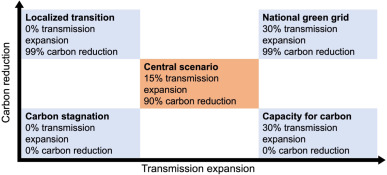Researchers from the UK’s University of Oxford and Spain’s University of Sevilla have developed a novel method to generate high spatiotemporal resolution of residential heat pump demand. The method is based on high spatiotemporal resolution weather data as well as heat pump field trial data from academic literature.
“Although several publications have modeled heat pump load, existing models either do not accurately capture hourly heat pump usage patterns or do not represent sub-national heating demand variation,” the researchers said. “Moreover, no previous study has analyzed the implications of these spatiotemporal variations for bulk power systems planning for an entire grid region.”
The academics divided Britain into 30 temperature zones and took into account hourly onshore wind and solar capacity potential. Then, in each zone, the population-weighted average of the soil and air temperatures is calculated. Based on that and the field trial data, the method then calculates the regional heating demands and coefficient of performance (COP).
Following that, they utilized PyPSA-Eur, an open model dataset of the European energy system at the transmission network level that covers the full Entso-E area. The method provides an output of the optimal bulk power system needed to meet heat pump demands, as well as the operation costs and load shedding volume.
Through all of those steps, the academic groups employed the model on the UK as a whole, in order to compare the multi-regional results to a generalized national one. The models for national and regional cases were validated on historical data from 2019, with a deviation of 0.7% in both cases.

Image: University of Oxford, Applied Energy, CC BY 4.0 DEED
The results of the comparison between multi-regional results and a generalized national heat pump demand were presented in the study “Data-based, high spatiotemporal resolution heat pump demand for power system planning,” published on Applied Energy. They were calculated on five scenarios, considering the two axes of UK transmission expansion and carbon reduction. Four scenarios were on the edges of the matrix, while a central scenario considered a 15% transmission expansion and 90% carbon reduction.
According to the researchers, the national temperature-based model overestimates total heating demand in southern regions of the UK by up to 26% and underestimates demand in northern regions by up to 21%. In the peak hour, the national model overestimates the electric heating demand in coastal areas by up to 51% and underestimates it inland by up to 20%, compared to the multi-regional approach.
“Under a central scenario, using a spatially uniform heating demand profile leads to a total absolute error in the spatial allocation of generation and storage of 15.1 GW (1.3%) compared to a high-resolution demand pattern based on local temperatures,” the paper emphasized. “These capacity differences are spatially concentrated in a few locations and primarily reflect the need for more battery storage capacity to meet regional heating peaks when using high spatiotemporal resolution heating demand.”
Furthermore, under the central scenario, operational costs increase by 5% when operating a system planned with national heating demand to meet multi-regional real demand. In a scenario of 0% transmission expansion and 99% carbon reduction, the cost increase will be 323%.
“Using multi-regional temperatures to model heating demand reveals significant regional differences in Britain, a medium-sized country with a temperate climate, and could have an even more substantial impact in larger countries with more variable climates,” the researchers concluded.
This content is protected by copyright and may not be reused. If you want to cooperate with us and would like to reuse some of our content, please contact: editors@pv-magazine.com.



By submitting this form you agree to pv magazine using your data for the purposes of publishing your comment.
Your personal data will only be disclosed or otherwise transmitted to third parties for the purposes of spam filtering or if this is necessary for technical maintenance of the website. Any other transfer to third parties will not take place unless this is justified on the basis of applicable data protection regulations or if pv magazine is legally obliged to do so.
You may revoke this consent at any time with effect for the future, in which case your personal data will be deleted immediately. Otherwise, your data will be deleted if pv magazine has processed your request or the purpose of data storage is fulfilled.
Further information on data privacy can be found in our Data Protection Policy.